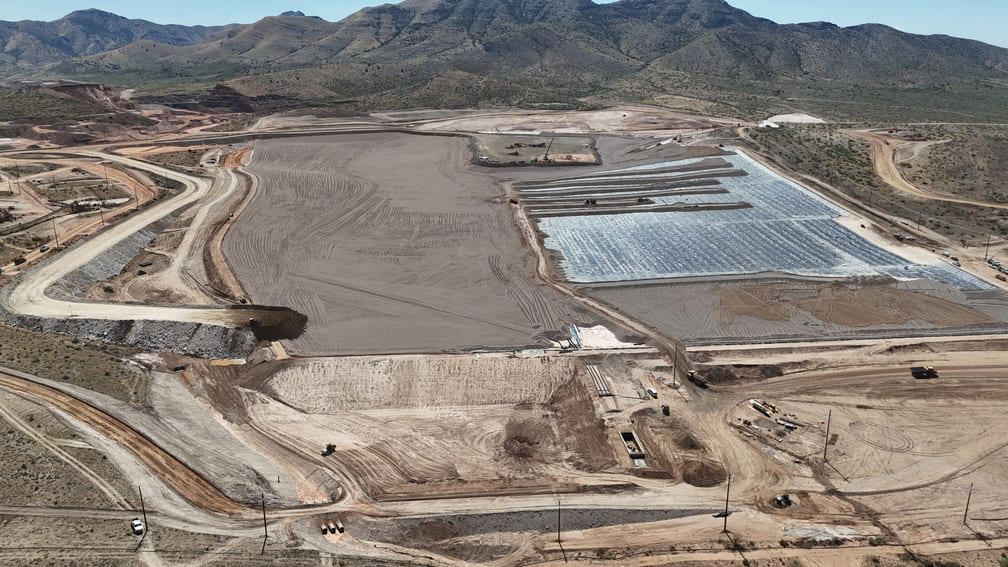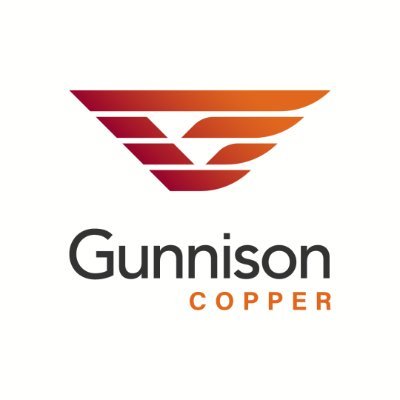Gunnison Copper Set to Begin US Production with Johnson Camp Mine in September 2025

Gunnison Copper begins US production Sept 2025 via risk-free Nuton partnership, advancing $1.3B NPV Arizona project with strong govt support & tax credits
- Gunnison Copper will begin producing copper cathode in September 2025 through its Johnson Camp project in partnership with Nuton LLC (Rio Tinto venture), with 25 million pounds per annum capacity expected by mid-2026
- The Nuton partnership provides $100+ million in funding and technology for Johnson Camp with no financial exposure to Gunnison, offering 100% of net operating profits after Nuton recovers their investment over 4-5 years
- The Gunnison open pit project shows impressive economics with $1.3 billion NPV, 170 million pounds annual copper production for 18 years, and $1.94 all-in sustaining costs at $4.10 copper price
- Positioned as a domestic US copper producer supplying directly to US markets, with unsolicited interest from Department of Energy and Department of Defense, plus $13.9 million in transferable tax credits
- Multiple programs underway to optimize economics including mineral sorting technology, byproduct revenue from gravel and limestone (currently valued at zero), and operational improvements targeting reduced capital costs
Gunnison Copper (TSX:GCU) represents a transformation story in the junior mining sector, having successfully pivoted from in-situ recovery to conventional open-pit operations while establishing a near-term production profile through an innovative partnership structure. Led by President and CEO Stephen Twyerould, a geologist with 40 years of experience including a decade working on Arizona projects, the company has positioned itself as a domestic US copper producer at a time of heightened focus on supply chain security and critical mineral independence.
The company's strategic evolution reflects both operational pragmatism and market opportunity recognition. After initially developing an in-situ leach operation starting in 2020, management recognized that rising copper prices made open-pit mining significantly more attractive. As Twyerould explained,
"We realize that if you're doing an open pit, you're going to get 20 to 30% more copper out of the ground than in situ recovery. That 20 to 30% at, $4 copper makes a huge difference."
Immediate Production Through Strategic Partnership
The company's most immediate catalyst stems from its Johnson Camp operation, developed through a unique partnership with Nuton LLC, a Rio Tinto venture company specializing in sulfide leaching technology. This arrangement represents an innovative financing and development model that eliminates traditional junior mining risks while providing operational experience and cash flow potential.
Under the Nuton agreement, the venture company has invested over $100 million in mine construction and technology deployment, with Gunnison maintaining 100% ownership and operational control. The partnership structure is designed as a four to five-year initial period where copper production goes toward paying down Nuton's investment. "You can think of it like a sort of zero interest zero liability debt," Twyerould noted, emphasizing the risk-free nature of the arrangement for Gunnison shareholders.
The Johnson Camp facility is designed for 25 million pounds of copper per annum capacity, with production beginning in September 2025 and full capacity expected by mid-2026. The operation features two process streams: oxide processing for baseline revenue and sulfide processing using Nuton's proprietary technology. Copper cathode production will be sold through Rio Tinto as offtake agent, supplying directly into US domestic markets.
Technology Transfer and Learning Opportunity
Beyond immediate production, the Nuton partnership provides Gunnison with unprecedented access to cutting-edge sulfide leaching technology and operational expertise. The company is building substantial technical capabilities across metallurgy, engineering, and geology that would typically be prohibitively expensive for a junior mining company.
"The strategic advantage is there's not going to be another junior company that knows more about sulfide leeching than what we do because we get to turn the knobs."
This knowledge transfer becomes particularly valuable when considering the company's larger Gunnison open pit project, which contains sulfide materials that could benefit from similar processing technology.
The partnership allows for potential joint venture conversion after the initial period, with Nuton able to acquire a 49% minority stake or license the technology for continued independent operation. This optionality provides multiple pathways for value realization while maintaining strategic flexibility.
The Gunnison Open Pit: Scale and Economics
The company's primary long-term asset is the Gunnison open pit project, which completed a Preliminary Economic Assessment (PEA) in late 2024 demonstrating robust economics. The study showed an after-tax NPV of $1.3 billion using a $4.10 copper price assumption, with an internal rate of return around 20% and four-year payback period.
Production projections indicate 170 million pounds of copper per annum over an 18-year mine life, with all-in sustaining costs of $1.94 per pound. At current copper prices above $4.00, this represents substantial cash flow generation potential. Approximately 90% of production comes from oxide material using conventional heap leach processing, reducing technological risk compared to sulfide-dependent projects.
The project benefits from existing infrastructure advantages, including proximity to the Union Pacific rail line approximately 3 kilometers south of the deposit. Current planning includes a 4-kilometer rail spur connection, which opens opportunities for both supply logistics and byproduct marketing.
Interview with Stephen Twyerould, CEO of Gunnison Copper
Value Enhancement Initiatives
Gunnison has identified multiple opportunities to enhance project economics through its High Value Add (HVA) program, focusing on revenue streams currently valued at zero in the base case PEA. Two primary initiatives target byproduct valorization from materials already included in mining costs.
Gravel extraction represents a significant opportunity, as the operation will remove substantial quantities of aggregate material as part of pre-stripping operations.
"We dig this gravel up and we put it on a waste stockpile and we assume zero value for it. While gravel's a hot commodity in a lot of places."
The rail line proximity opens regional markets for aggregate sales, with studies currently underway to quantify market potential and realizable values.
Similarly, the project contains approximately 85 million tons of white limestone in the deposit's hanging wall, currently classified as waste material. This high-quality limestone could serve niche construction markets and cement manufacturing, representing pure incremental revenue since extraction costs are already incorporated in the base case economics.
Operational Optimization and Technology Integration
The company is pursuing multiple technical initiatives to reduce capital costs and improve operational efficiency. Current studies examine alternatives to traditional drill-and-blast methods for overburden removal, with geotechnical analysis suggesting much of the material can be ripped rather than blasted, reducing costs significantly.
Transportation optimization represents another focus area, with evaluation of conveyor or rail systems as alternatives to conventional truck haulage for waste movement. Given the substantial pre-stripping requirements, transportation efficiency improvements could materially impact capital and operating costs.
Mineral sorting technology offers additional upside potential through selective processing of higher-grade material.
"We believe we can remove close to 40 or 50% of the material that we're processing as waste before we spend the money on acid on it."
This approach could reduce acid consumption, increase processed grades, and lower infrastructure requirements.
US Market Positioning and Government Support
Gunnison's positioning as a domestic US copper producer has generated significant attention from federal agencies focused on supply chain security and critical mineral development. The company received a $13.9 million 48C tax credit from the Department of Energy, representing the only copper project to receive such recognition. These transferable credits provide near-term non-dilutive funding when sold at market rates.
Government engagement extends beyond financial incentives, with unsolicited outreach from both Department of Energy and Department of Defense representatives.
The company's Arizona operations benefit from the state's established mining-friendly regulatory environment and existing infrastructure. Recent permitting successes at Johnson Camp, including air permits, mine reclamation plans, and aquifer protection permits completed in under 12 months, demonstrate regulatory efficiency and stakeholder engagement effectiveness.
Financial Position and Development Timeline
Recent financing activities have strengthened the company's balance sheet for advancing development objectives. Canadian $14 million raised in 2025 through two separate financings supports HVA program expansion and early-stage PFS work. The transferable tax credit proceeds, estimated at approximately $8 million after transaction costs, are targeted toward debt reduction.
The development timeline positions PFS completion and permitting processes in parallel during 2026, creating a fully permitted, feasibility-completed asset suitable for strategic partnerships. Management acknowledges that Gunnison's scale likely requires partner participation for development financing, with timing focused on value maximization rather than immediate transaction execution.
"Gunnison to be frank is probably too big for us to develop on our own. We need a partner. It's really a matter of like when do you bring that partner in that creates the most value for the shareholders."
The Investment Thesis for Gunnison Copper
- Near-term cash flow catalyst - Johnson Camp production beginning September 2025 with zero financial risk through Nuton partnership, providing 25 million pounds annual capacity and technology learning opportunities
- Exceptional project economics - Gunnison open pit shows $1.3 billion NPV with $1.94 AISC versus $4+ copper prices, generating substantial cash flows over 18-year mine life with 170 million pounds annual production
- Multiple value enhancement opportunities - HVA program targeting gravel and limestone byproducts currently valued at zero, plus mineral sorting and operational optimization initiatives that flow directly to bottom line
- Strategic US positioning - Domestic copper production focus aligned with government priorities, evidenced by $13.9 million tax credits and unsolicited federal agency interest in supply chain security context
- De-risked development pathway - Proven permitting capabilities, existing infrastructure advantages, and clear strategy for strategic partnership timing to maximize shareholder value
- Technology leverage - Unique access to Rio Tinto sulfide leaching technology through operational partnership, providing competitive advantages for future development applications
- Strong market timing - Positioned for copper demand growth and supply security concerns while maintaining operational flexibility through partnership structures and strategic optionality
The global copper market faces a structural supply-demand imbalance driven by energy transition requirements and infrastructure development, with particular emphasis on domestic production security in developed markets. Electric vehicle adoption, renewable energy infrastructure, and grid modernization create unprecedented copper demand while traditional mining regions face increasing political and operational challenges.
US policy initiatives under both previous and current administrations have prioritized critical mineral supply chain independence, evidenced by legislation including the Inflation Reduction Act and various Department of Defense strategic initiatives. This policy environment creates significant advantages for domestic producers capable of delivering production quickly and reliably.
Gunnison's positioning captures multiple thematic convergences: domestic production capability, near-term delivery timeline, and strategic government support through both financial incentives and regulatory engagement. The company's technology partnership provides access to advanced processing capabilities while maintaining operational control and economic upside. As Twyerould summarized the opportunity:
"There's so much positive buzz in the US. It's all about US copper. It's all about domestic copper. We're right in the middle of it."
Analyst's Notes




Subscribe to Our Channel
Stay Informed























